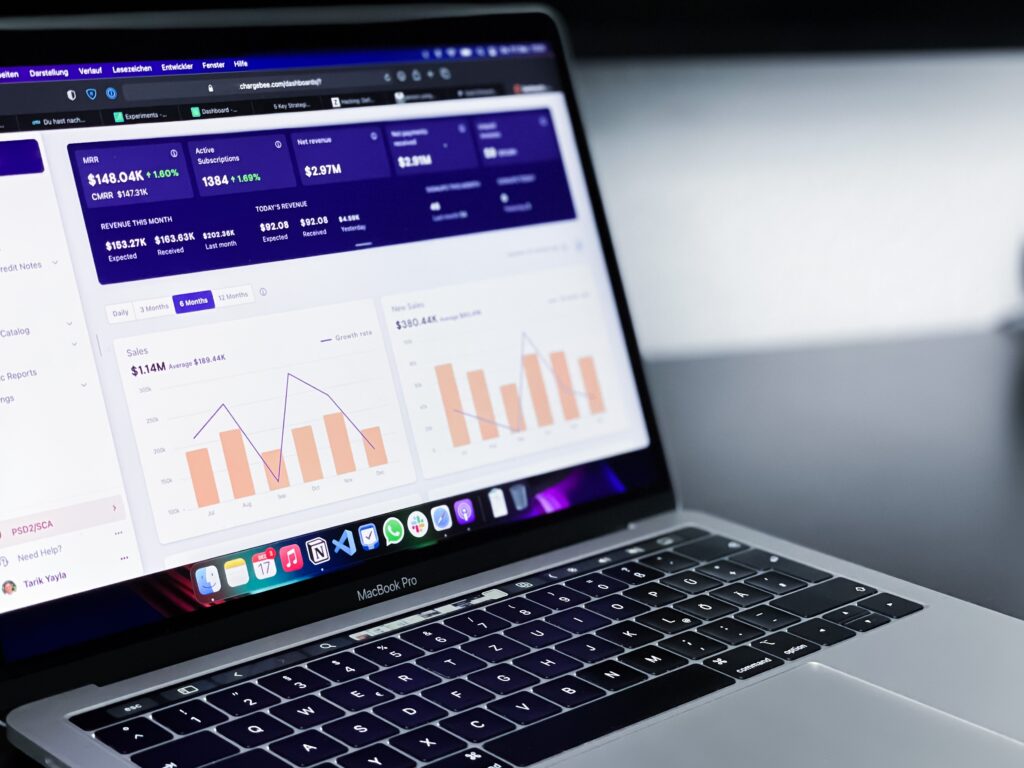First impression
What is the first thing you do when you want to check out a company you have just heard of? That’s right – you go to their website and social media accounts to see what they do and who’s behind the company. Today, a website is so much more than just a place to find information, even for small businesses. It is a place where you can interact with the company, download material, and sign up for events and webinars. This post will cover the process you can use when building your website. I will also cover some of the tools, paid and free, I usually use. Remember, it’s not always about generating more traffic to your site. Sometimes all you need is to help your visitors take the desired actions to convert them to leads, prospects, and customers.
This post’s content is relevant to individuals and businesses working with marketing for both B2B and B2C businesses.
Corporate strategy
Every organization should have a strategy. Why was the company founded? What challenges are you helping clients overcome? How do you do it? Sometimes, the answers to these questions are easy, but writing them down helps remind everyone why they have the job they have. More importantly, when business units and departments start working on their strategy, objectives, and goals, they must ensure their plans align with and support the overall strategy. If they don’t, they will become dysfunctional and find it harder to work together with other departments as they no longer share the same goals.
The process
In my previous post, ‘Think BIG,’ I covered the thought process when approaching a new project. I use the same process for building a website with HubSpot’s ‘Growth-Driven Design’ methodology. You can access their free guide here. I also recommend signing up for the HubSpot Academy and take the Growth-Driven Design Certification. Great content – and it’s free. According to HubSpot, their methodology results in (on average) 14.1% more visitors, 16.9% more leads, and an 11.2% increase in revenue within six months of launching your new site. I’ll take those numbers any day.
The strategy
This phase is my ‘Think BIG’ phase, but with much more depth. HubSpot lists their steps as:
- Business and website goals
- User experience (UX) research
- Jobs to be done
- Fundamental assumptions
- Buyer personas
- Journey mapping
- Global strategy
- Brainstorm wishlist
The first point is crucial. Everything about your website needs to be aligned with your business goals. In my world, there are three critical parts of a successful growth strategy. Marketing, Sales, and Product. Which one comes first? It doesn’t really matter; the important thing is there is a shared goal. There are so many holes you can dig yourself into if you’re not properly aligned:
- You have a great product but no connection with sales and marketing
- You have the brightest minds in marketing, but the product always fails to deliver
- You have the best sales team in the world, but no growth engine
Consistency and alignment are vital topics here. I usually say, ‘you can’t have one without the other‘!
The Launch Pad
Build a new website fast, which is better than your existing site. Still, the Launch Pad is not the full version of your new website – but I recommend you start small to help you reap the benefits (harvest low hanging fruits) in the short term. You want to generate more traffic and leads from the start. These are leading indicators as to how well your project is doing. The impact on revenue is a lagging indicator.
- Customizing an acceleration approach
- Running sprint workshops
- Effective content development
- Investing in internal efficiencies
This is where you implement the prioritized items from the strategy phase. Most of the time, this covers basic functionalities, journey mapping, buyer personas, and fundamental assumptions. You should expect to see results within a couple of weeks of launch, but it will take about 6 months until you can evaluate the results correctly.
Continuous Improvement
When you complete a project, does that mean you can’t make improvements anymore? No, most definitely not. Many organizations are missing out by leaving their website or digital presence alone once development is completed. The only way to stay ahead of the competition is to continually keep optimizing and adjusting your website. And this includes all parts: design, journey mapping, buyer personas – the whole thing. Tools like Google Analytics and the HubSpot tracking code will help you better understand what works and what doesn’t. Where should you make improvements or try out a different approach? You will see where in the funnel leads and prospects get stuck, and you can adjust your settings accordingly.
Continuous improvement is precisely what it says. You should work to make your website, emails, messaging, and everything else better every day.
Useful tools for building a website
There are so many tools and services in the marketplace for creating websites. You need to pick one which you are comfortable with, and that can help your business scale. There is no point in using a tool or service which won’t suit your business needs in 6, 12- or 18-months’ time. Many hosting providers offer free access to WordPress. It’s a great place to start. I’ve built my websites using WordPress and Elementor. Both have ‘drag-and-drop’ interfaces meaning you can create your site without any coding experience or knowledge. There are a ton of plugins available to make your WordPress site a lead and demand generation engine for your business.
Google Kit
Will allow you to add Google Analytics, Tag Manager, etc. effortlessly
HubSpot
Will sync form submissions to CRM tool helping you create mailing lists
Mailchimp
Landing pages, email marketing, and much more
Vimeo and Youtube
Allows you to insert links to your existing video channels
WooCommerce
Open source eCommerce platform
And many more.
Getting started
The first step is often the hardest one to take. Especially if it feels like a step backward. Redesigning your website is more important than ever if you want to stay ahead of your competitors. Follow a framework, use data to make decisions, and be creative. Get in touch if you want a free one-hour consultation on best practices and how to get started.




Pingback: Engage with your contacts - Think BIG | Start Small | Grow Fast